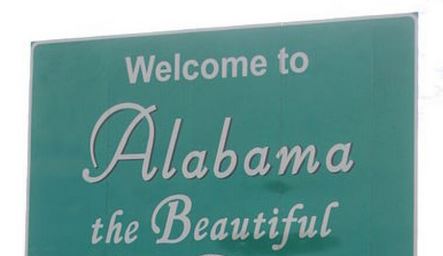Wyoming's First Footprints: Tracing the History of Early Inhabitants and Settlers
This article explores the deep history of Wyoming's first inhabitants, from the earliest Paleoindians to the arrival of European explorers and the establishment of the first permanent settlements.
Prehistoric Inhabitants: A Journey Through Time
Wyoming's human history extends back thousands of years, with evidence of several distinct prehistoric cultures:
- Clovis Culture (c. 12,000 years ago): The Clovis people, known for their distinctive fluted projectile points, were among the earliest inhabitants of Wyoming, as evidenced by archaeological discoveries at sites like the Colby Mammoth Site (Source: Archaeological reports on Clovis sites in Wyoming, University of Wyoming Anthropology Department). They were nomadic hunters who pursued large game animals, including mammoths.
- Folsom Culture (c. 10,000 years ago): Following the Clovis culture, the Folsom people, also skilled hunters, inhabited the region. They are known for their finely crafted spear points, often found in association with bison remains (Source: Archaeological studies of Folsom sites in Wyoming).
- Eden Valley Culture (c. 8,000 years ago): The Eden Valley culture represents a later adaptation to the changing environment, with a focus on hunting smaller game and gathering plant resources (Source: Archaeological research on the Eden Valley complex).
- Paleo-Indians: Lived in the area before the arrival of Europeans.
Native American Tribes: Shaping the Landscape
By the time of European contact, several major Native American tribes inhabited Wyoming:
- Arapaho: The Arapaho, an Algonquian-speaking people, were nomadic bison hunters who frequented the plains of eastern Wyoming.
- Cheyenne: Closely allied with the Arapaho, the Cheyenne, also Algonquian-speaking, shared similar territories and a nomadic lifestyle centered on bison hunting.
- Crow: The Crow, a Siouan-speaking people, occupied the northern plains and mountains of Wyoming, known for their horsemanship and their skill in warfare.
- Shoshone: The Shoshone, a Numic-speaking people, inhabited the western and southwestern parts of Wyoming, adapting to diverse environments from mountains to deserts.
- Ute: The Ute, also Numic-speaking, primarily occupied areas further south, but their territory extended into parts of southwestern Wyoming.
These tribes, with their distinct languages, cultures, and traditions, shaped the landscape and left a lasting legacy on the region (Source: Tribal websites and historical accounts of each tribe).
European Exploration and Early Encounters
The first Europeans to enter the Wyoming area were likely French Canadian fur traders and explorers.
- French Canadian brothers François and Louis-Joseph de La Verendrye are believed to have visited the area in 1742, marking an early European presence, though details of their journey remain debated (Source: Historical accounts of the La Verendrye expeditions).
- John Colter, a member of the Lewis and Clark Expedition, is credited with being the first American to explore parts of northern Wyoming during the winter of 1807-1808, while working as a fur trapper (Source: Biographies of John Colter, accounts of the Lewis and Clark Expedition).
Early Settlements: Bridging Cultures
The establishment of permanent settlements in Wyoming marked a significant shift in the region's history:
- Robert Stuart and a group of Astorians (members of John Jacob Astor's fur trading company) built the first known cabin in Wyoming in 1812, a temporary structure that represented an early attempt at establishing a foothold in the region (Source: Historical accounts of the Astoria expedition).
- In 1834, William Sublette and Robert Campbell established Fort Laramie, the first permanent trading post in Wyoming. This fort, located on the North Platte River, became a major hub for the fur trade and a key stop on the Oregon, California, and Mormon Trails (Source: National Park Service, Fort Laramie National Historic Site).
- John Carnes and John Holland The first two Anglo-Americans to live year-round in Jackson Hole around 1884.
 The story of Wyoming's first inhabitants is a story of adaptation, resilience, and cultural diversity. From the ancient Paleoindians to the diverse Native American tribes and the early European explorers and settlers, Wyoming's human history stretches back millennia. Understanding this deep and complex past is essential to appreciating the rich tapestry of cultures and events that have shaped the state we know today. Preserving archaeological sites, honoring Indigenous heritage, and learning from the experiences of those who came before us are crucial to ensuring that this vital part of Wyoming's story continues to be told.
The story of Wyoming's first inhabitants is a story of adaptation, resilience, and cultural diversity. From the ancient Paleoindians to the diverse Native American tribes and the early European explorers and settlers, Wyoming's human history stretches back millennia. Understanding this deep and complex past is essential to appreciating the rich tapestry of cultures and events that have shaped the state we know today. Preserving archaeological sites, honoring Indigenous heritage, and learning from the experiences of those who came before us are crucial to ensuring that this vital part of Wyoming's story continues to be told.
Sources:
- Archaeological reports on Clovis, Folsom, and Eden Valley sites in Wyoming
- University of Wyoming Anthropology Department
- Ohio Archaeological Council
- Tribal websites (Arapaho, Cheyenne, Crow, Shoshone, Ute)
- Historical accounts of the La Verendrye expeditions
- Biographies of John Colter
- Accounts of the Lewis and Clark Expedition
- Historical accounts of the Astoria expedition
- National Park Service (Fort Laramie National Historic Site)
- Wyoming State Historic Preservation Office



